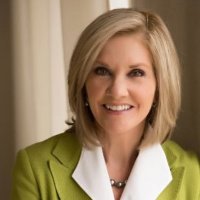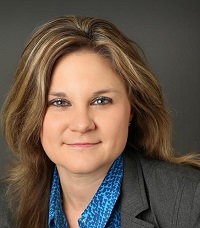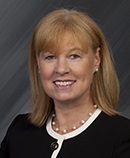How Payer Philanthropy Can Address Social Determinants of Health
Payers looking to reduce their downstream spending are pouring millions into addressing the social determinants of health in the community setting.

Source: Thinkstock
- Rising healthcare costs associated with an increase in chronic diseases have led many payers to seek out strategies to get ahead of the spending curve while improving the overall health of their member populations.
As population health management becomes more important for financial success on the provider side, payers are taking a similar approach to preventive, proactive engagement by making significant investments in improving the social determinants of health (SDOH).
Social determinants include societal and environmental conditions such as income, education level, language fluency, cultural differences, employment status, and level of healthcare access.
Addressing the social determinants of health before they contribute to long-term negative outcomes for beneficiaries has become an important goal for payers and providers, both of whom stand to benefit financially by ensuring that their patients don’t become costly super-utilizers.
“Health doesn’t happen in the doctor’s office. Health happens in the community and at home,” said Humana Foundation Interim Executive Director Pattie Dale Tye in an interview with HealthPayerIntelligence.
“And if we don’t pay attention to those very important health components [outside the doctor’s office] then we’re never going to bend the trend of a $3 trillion healthcare bill.”

Pattie Dale Tye, Humana Foundation Interim Executive Director
Source: Xtelligent MediaIn 2011, the National Institutes of Health found that about a third of all patient deaths could be directly attributed to social determinants, representing a significant opportunity for healthcare stakeholders to make a difference for vulnerable patients.
“If you look at the data that’s out there, 10-20 percent of a person’s overall health outcomes is directly related to healthcare," added Executive Director of the Aetna Foundation Lynn Ostrowski.
"So then 30 percent is based on a person’s genetics, and the remaining 40 or 50 percent is based on SDOH."
Payers now must work alongside community leaders to identify the determinants with the most significant influence on individual health.
Once social determinants like employment access, transportation, and preventative services are improved, payers may begin to notice lower utilization rates for direct healthcare.
“When we to start to intervene and offer individuals more opportunities than just medical benefits, you’ll see a drastic drop in ER usage, inpatient and outpatient usage, and healthier outcomes for individuals just in general,” said Ellen Sexton, CEO of UnitedHealthcare Community Health Plan of WI.
Not all communities require the same societal and environmental improvements, which requires payers to tailor their approaches and investment to each population.
“There is no silver bullet when it comes to addressing the health factors that impact our lives,” said Remy Noble, Project Manager for the Humana Foundation.
Payers can effectively manage SDOH by offering grants and donations to community-level programs that mitigate the most pressing social health determinants.
How payers can participate in philanthropy and community interventions
Leaders in payer philanthropy stress the importance of community alignment for making sure payers and their giving foundations are financing the appropriate programs.
“I think that it will take all of us working together to move this needle on health, so my advice is to work collaboratively and collectively with the community organizations that have been on the ground with folks that need health funding the most,” said Tye.
Only the ground-level community stakeholders can guide payers to where funding creates the most effective SDOH improvements.
“When you talk about collaboration, it’s not about payers coming together. You need cross-sector collaboration to touch all areas of a community,” Noble said.
Ostrowski and the Aetna Foundation have found that impactful determinants in their beneficiary communities could range from quality of housing to transportation access, but few community profiles are exactly the same.
“Our members are a large community, and they live in their own communities, and some live in areas that have lower life expectancy or don’t have high-quality housing, or don’t have access to public transportation, or whatever the issues in the community are,” Ostrowski said.
“How can we address the issues that our members have in their communities?”
Identifying Care Disparities for Population Health Management
Overcoming Patient Barriers to Chronic Disease Management
Investing in community employment and environmental stability
Ellen Sexton and UnitedHealthcare Community Plan of WI found that the most pressing social barriers to health at the local level involved under-employed and disabled individuals without the means to live independently.
“We wanted to ensure access to long term health services, for community members to live independently, help them with employment, and/or help them interact with others who have disabilities,” Sexton said.
To do this, UnitedHealthcare opened proposal submissions for community programs that aimed to either improve financial independence or interpersonal disability care.

Ellen Sexton, CEO of UnitedHealthcare Community Health Plan of WI
Source: Xtelligent MediaAfter receiving 22 proposals, UnitedHealthcare consulted with regional stakeholders to whittle down the choices to four final grant offerings.
As a result, UnitedHealthcare made investments of $25,000 to The Arc Wisconsin, Easterseals Southeast Wisconsin, Independence First, and Life Navigators.
The Arc has plans to train 20 human-service professionals statewide, who will then provide future-planning education and support to 60 families and individuals with intellectual or developmental disabilities.
Easterseals Southeast’s grant program aims to increase training and employment services for professionals. Their grant will provide resources to facilitate employment services for 350 people.
At Independence First, the grant will go towards expanding access to mobility equipment by providing 30 people with equipment vouchers and increase connections to independent-living resources for people with disabilities.
And Life Navigators will launch an Intergenerational Family Support Program that provides in-home and telephone-based interventions for 40 caretakers and consumers, community training for 50 caregivers, and training for 50 financial planners.
“Getting our community health workers and caseworkers to understand a community’s health needs as a whole helps us understand the social determinants of health in an area as well as specific healthcare needs, into a person’s whole healthcare cost,” said Sexton.
Creating positive community health behaviors
Payers often need to coordinate with educational and outreach programs to increase positive lifestyle choices and behaviors in the community, according to Pattie Dale Tye.
“We’re interested in programs that help folks have better health behaviors. And we hope these health behaviors will impact chronic diseases, especially like diabetes and depression,” Tye said.
Recently, the Humana Foundation invested $735,000 in community health programs serving Broward County of South Florida.
As part of Humana’s Bold Goal initiative, the organizations will take a population health management approach to improving care with societal and strategic partnerships.
“I think that it is important to understand the needs of the community. While there are some overarching health needs that must be addressed, like diabetes and depression have national averages, each community is different,” Noble said.

Remy Noble, Project Manager for the Humana Foundation
Source: Xtelligent MediaEight programs dedicated to improving access to healthcare shared in the funds.
“These awardees stood above the rest to impact their focus areas, but they also exhibited the ability to scale and sustain their programs,” Tye said.
The Humana Foundation has found long-term success with community-level grants that help to improve access to care and support proactive population health management.
Since 1975, the group has given more than $286 million to fund programs in the areas it serves.
In 2015, a portion of those funds went to the Bridges to Health Clinic in Louisville, KY, which uses holistic peer-support groups to lower blood-pressure and increase weight loss for individuals inhibited by mood disorders, as well as the BOUNCE initiative that improves the safety and health perception of vulnerable children.
“Each community has their own health needs, and it’s very important to have their perspective in these programs, and that you’re addressing their needs,” Noble added.
Top 5 Largest Health Insurance Payers in the United States
Payer Collaboration Can Address Social Determinants of Health
Addressing health equity through payer investment
Health equity between racial and ethnic populations is an ongoing concern for payers and providers.
The Aetna Foundation has focused on supporting initiatives that level the playing field for ethnic and racial groups by improving healthy behaviors, creating safe environments, and addressing socioeconomic disparities.
Ostrowski says that organizations can receive between $50,000 and $100,000 from Aetna after undergoing an assessment of their potential community impact.
Organizations that that create strategic partnerships are a high priority, as the Aetna Foundation looks for programs that can organically grow into self-sustaining health equity programs.
“We look carefully at who their partners are and how they can carry the project forward and keep it sustainable,” Ostrowski said.
According to Ostrowski, in 2016 the Aetna foundation funded programs across the country that ranged from increasing health food access and cultivation techniques for Sioux Indians in Minnesota, mobile preventative health education in Florida elementary schools on diet, nutrition and stress management, and providing employment opportunities for urban students in Ohio.

Lynn Ostrowski, Executive Director of the Aetna Foundation
Source: Xtelligent Media“We know that people sometimes can’t gain a job if they don’t have a car or reliable public transportation,” Ostrowski said.
“We also know that if people don’t have access to fresh, affordable produce in their community, then it is hard for them to eat healthy.”
The programs were hosted in schools and public-access areas like recreation centers, shared garden spaces, and other community facilities.
Thirty percent of youth-focused physical activity programs in 2015 reported a significant increase in health status, according to impact reports shared by Ostrowski.
Another 46 percent reported at least a moderate increase in health from these programs.
Supplemental findings from the reports indicated that 53 percent of youth were very likely to continue to engage in physical activity and exercise.
These payers, along with their colleagues across the country, recognize that patients who are equipped with the skills, knowledge, and opportunities to make healthier lifestyle decisions are less likely to experience preventable chronic diseases that contribute to more than $317 billion in spending each year.
“The impact of these programs, financially, is there,” Ostrowski concluded.
Addressing the social determinants of health by collaborating with community stakeholders can play a significant role in ensuring that payers bring value to their beneficiaries.
Using philanthropy as an entry point can raise a payer’s positive profile while contributing to the quality and experiences that members expect from their insurance companies, their providers, and their community at large.
